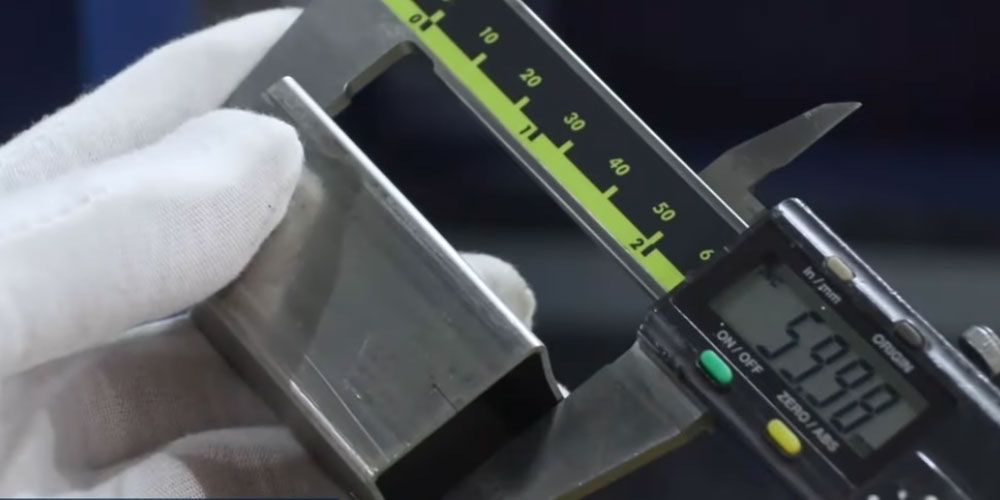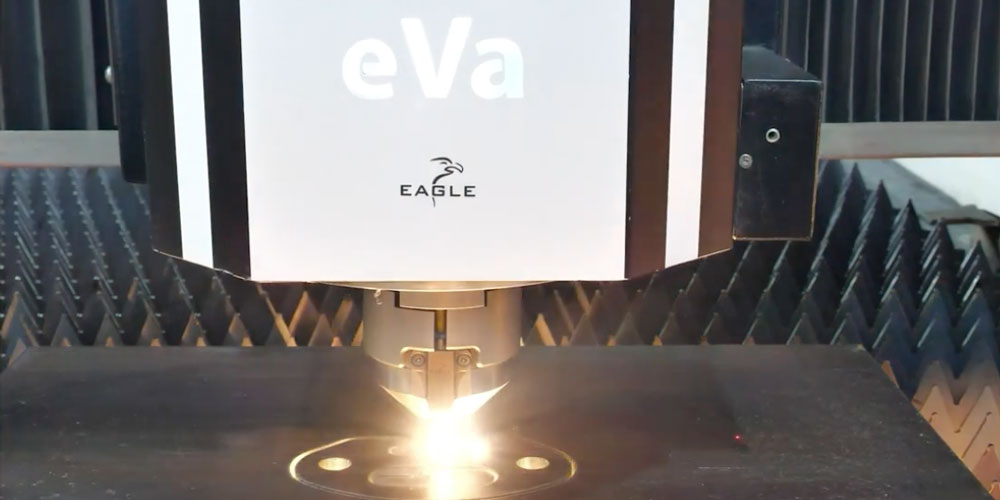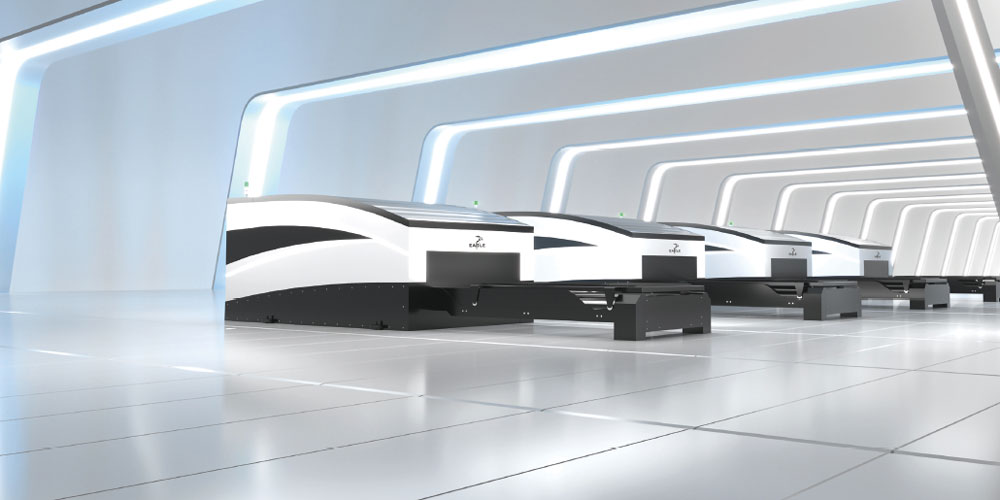
RECENT POSTS
PMI Blog

How to Get Better Cut Quality with Laser Tube Processing
by Eric St. James
Published at 2025-07-30
The laser tube processing industry is constantly evolving, with new technologies and techniques emerging to improve efficiency and cut quality. However, many fabricators struggle with achieving optimal cut quality, leading to increased waste, slower production times, and ultimately, reduced profitability. In this blog, we'll explore some key factors that influence laser tube cut quality and provide actionable tips to help you achieve superior results.
How to Get Better Cut Quality with Laser Tube Processing
Laser tube cutting has revolutionized the fabrication industry, offering unparalleled precision and speed for processing intricate designs on various materials. However, achieving truly high-quality cuts consistently can be a challenge. If you're struggling with dross, burrs, inconsistent edges, or slow processing, this blog is for you.
Here's how to elevate your laser tube cutting game and achieve superior cut quality:
1. Master Your Material: Know Its Properties Inside and Out
The type of material you're cutting is perhaps the most significant factor influencing cut quality. Different metals react differently to laser energy.
- Material Grade and Consistency: Even within the same material type (e.g., stainless steel), different grades and batches can have varying chemical compositions and internal stresses. These variations directly impact how the laser interacts with the material.
- Surface Condition: Rust, scale, oil, or even fingerprints on the tube surface can absorb or reflect laser energy inconsistently, leading to irregular cuts and dross. Ensure your tubes are clean and free of contaminants.
- Tube Straightness and Roundness: Imperfections in the tube's geometry can cause the laser to be out of focus or misaligned, resulting in poor cut quality, especially on longer tubes or complex profiles.
Tip: Work with reputable material suppliers. Consider pre-cleaning or inspecting tubes before processing. Invest in quality assurance for incoming materials.
2. Optimize Your Laser Parameters: The Heart of the Cut
Your laser machine's settings are critical. Even a slight deviation can lead to significant quality issues.
- Laser Power: Too little power and you won't cut through cleanly, leading to incomplete cuts or excessive dross. Too much power can cause excessive heat input, widening the kerf, and increasing burr formation.
- Cutting Speed: This works hand-in-hand with power. Slower speeds with high power can lead to overheating and a wider heat-affected zone (HAZ), while excessive cut speeds can result in incomplete cuts.
- Focus Position: The laser beam needs to be precisely focused on or just below the material surface for optimal energy density. Incorrect focus leads to a wider kerf, increased dross, and a rougher edge.
- Nozzle Type and Diameter: The nozzle directs the assist gas and shapes the laser beam. Different nozzle types are designed for specific materials and thicknesses. The diameter of the nozzle affects the gas flow and kerf width.
- Pulse Frequency and Duty Cycle (for pulsed lasers): These parameters control the energy delivery and can significantly impact the cut quality, especially for thinner materials or intricate details.
Develop a comprehensive parameter library for each material and thickness you process. Don't be afraid to fine-tune settings through test cuts. Modern laser machines often have pre-set parameters, but they usually require optimization for your specific setup.
3. Harness the Power of Assist Gas: More Than Just Blowing Away Debris
The assist gas plays a vital role in the cutting process, removing molten material and influencing the cut edge.
- Gas Type:
- Oxygen: Used for mild steel, oxygen creates an exothermic reaction that aids in cutting, but can also cause oxidation on the cut edge.
- Nitrogen (or Argon): Used for steel, stainless steel and aluminum, nitrogen provides a clean, oxide-free cut by preventing oxidation.
- Gas Pressure: Insufficient pressure won't effectively expel molten material, leading to dross. Excessive pressure can cool the cut zone too rapidly, resulting in a rough edge or even incomplete cuts.
- Gas Purity: Contaminants in the assist gas (like moisture or oil) can negatively impact cut quality, causing discoloration, burrs, and inconsistent edges.
Use high-purity assist gases. Regularly check and maintain your gas delivery system to ensure consistent pressure and flow.
Use high-purity assist gases. Regularly check and maintain your gas delivery system to ensure consistent pressure and flow.4. Maintain Your Machine Rigorously: A Well-Oiled Machine Cuts Best
A laser tube-cutting machine is a precision instrument. Neglecting maintenance will inevitably lead to a decline in cut quality.
- Optics Cleaning: Lenses and mirrors can accumulate dust and debris, reducing laser beam quality and power. Regular, careful cleaning is essential.
- Nozzle and Collet Inspection: Worn or damaged nozzles and collets can disrupt assist gas flow and beam alignment. Replace them as needed.
- Chuck and Support System Alignment: Ensure the chucks and support rollers are properly aligned to hold the tube securely and prevent vibration during cutting. Any misalignment can lead to inaccurate cuts.
- Calibration: Regularly calibrate your machine's axes and focus system to maintain accuracy.
- Dust and Debris Removal: Keep the cutting area and internal components free of accumulated dust and metal particles, which can interfere with sensors and moving parts.
Implement a proactive preventative maintenance schedule. Train your operators on proper daily checks and cleaning procedures.
5. Leverage Advanced Software and Features: Smart Cutting for Superior Results
Modern laser tube cutting machines come equipped with sophisticated software and features that can significantly enhance cut quality.
- Nesting Software: Optimizes material utilization and can also help in arranging parts to minimize heat buildup and distortion.
- Real-time Process Monitoring: Some machines offer sensors that monitor the cutting process and can adjust parameters on the fly to maintain optimal quality.
- Bevel Cutting Capabilities: For parts requiring welded joints, bevel cutting directly on the laser machine eliminates secondary operations and improves fit-up.
- Automatic Focus Adjustment: Advanced systems can automatically adjust the focus position based on material thickness and part geometry.
- Collision Avoidance Systems: Prevents damage to the machine and ensures consistent cutting by avoiding interference with previously cut parts.
Invest in comprehensive training for your operators on the full capabilities of your machine's software. Explore upgrades and add-ons that can improve your specific cutting challenges.
Achieving superior cut quality in laser tube processing is an ongoing journey of optimization. It requires a deep understanding of material properties, precise control over laser parameters, meticulous machine maintenance, and the intelligent application of advanced technology. By consistently focusing on these key areas, you'll not only improve your cut quality but also boost efficiency, reduce waste, and ultimately, increase your profitability in the competitive world of tube fabrication.
© 2023 Paramount Machinery Inc. All rights reserved.




